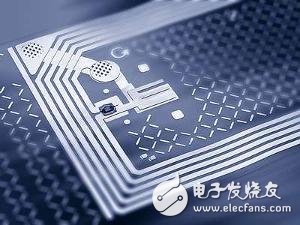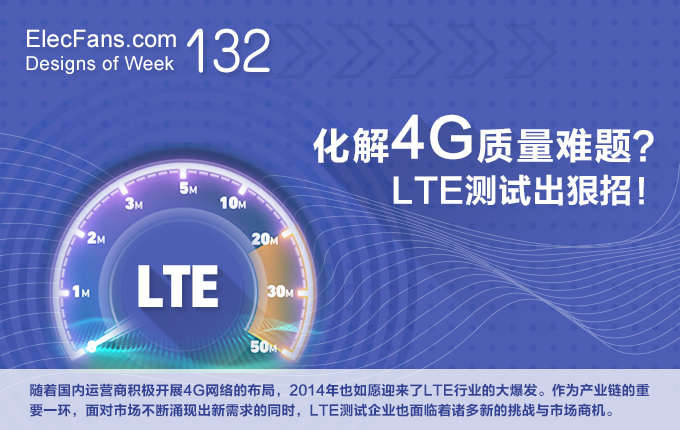Who is changing in the RF technology of the 4G era?
From December 2009 to January 2014, a total of 264 LTE networks in 101 countries/regions were put into commercial operation. It is expected that almost the same number of LTE networks will be put into operation in the next five years, and the LTE network will cover 64% of the world's population. At the same time, according to market research companies, the high-end market of smartphones will be saturated in the next five years, and the compound annual growth rate will be less than 5%. However, due to the need to replace the original function machines, the low-end smartphone market will still More than 20% growth; therefore, total smartphone shipments will grow by about 15%, but the RF content of each device will grow at a faster rate.

Filter demand growth
Due to the emergence of 4G LTE, the frequency band is increasing. The more frequency bands, the more complex the design of smartphones is. The addition of spectrum resources is a very scarce resource, especially in North America and Europe. Very crowded, which will definitely increase the complexity of the filter. Jiang Xiong, director of mobile product sales at TriQuint China, said in a keynote speech during the IIC in September that "the adoption of LTE will drive a significant increase in the overall effective market for telecommunications (TAM)."
He pointed out that in the next few years, high-performance filters will grow at a compound annual growth rate of 40% to 50% (as shown in Figure 1). He emphasized that the high-performance filters here mainly refer to two kinds of filters: bulk acoustic wave (BAW) and temperature compensated surface acoustic wave (TC-SAW).
The types and types of filters used in different types of mobile phones are different. For example, in the era of functional machines, only ordinary SAW filters are needed; even in the era of 3G mobile phones, filters for BAW filters and TC-SAW. The demand for the device is not large. However, in the 4G era, a smartphone must filter the transmit and receive paths of 2G, 3G, and 4G wireless access modes in multiple frequency bands, and also filter the receive paths of WiFi, Bluetooth, and GPS receivers. And there are more places where high-end smartphones may need to use filters. These frequency bands are different and cannot interfere with each other, which inevitably requires more filters to isolate these signals.
Due to its limitations, SAW filters are generally only suitable for applications below 1.5 GHz. In addition it is also susceptible to temperature changes. Above 1.5 GHz, the TC-SAW and BAW filters offer a performance advantage. The size of the BAW filter also shrinks with increasing frequency, making it ideal for demanding 3G and 4G applications. Also, even in high-bandwidth designs, BAW is less sensitive to temperature changes, and it has very low insertion loss and very steep filter edges. “BAW has higher integration, better performance, and greater bandwidth suppression, and it is optimized for LTE bands greater than 2 GHz.†Jiang Xiong mentioned in his speech.
The demand for advanced filters in smartphones will continue to increase. From Figure 2 we can see that there are three main trends in the development of RF devices in mobile devices: First, the power amplifier market is flat from flat to slow, and Jiang Xiong believes that this is mainly Because of the application of wideband amplifiers; second, CMOS switches and tuning components will grow steadily. Tuning components are not available in many mobile phones, but will be available in the future. Third, the growth of filters is very rapid. He believes that there are many reasons behind this, but the most important ones are band spread, carrier aggregation and diversity reception/WiFi.
For the 4G era, why do we need to adopt carrier aggregation technology? Jiang Xiong explained: "LTE-Advanced has a peak rate of 1 Gbps at low mobility and a peak rate of 100 Mbps at high mobility. Then, in order to support such a peak rate, We need more bandwidth. For operators, spectrum resources are relatively tight, and each operator has not allocated much spectrum resources, especially for continuous spectrum resources. Problem, LTE-Advanced has proposed a carrier aggregation solution."
Carrier aggregation currently has two implementation methods. One is continuous carrier aggregation, which integrates several adjacent smaller carriers into one larger carrier. The other is non-contiguous carrier aggregation, which is to aggregate discrete multi-carriers. For a wider frequency band use, simultaneous transmission of discrete frequency bands is achieved through uniform baseband processing.
In fact, the filter technology has experienced different stages of development. According to Jiang Xiong, the SAW filter was ceramic packaged more than a decade ago. The ceramic package is very strong and durable. Later, Murata made it into a plastic package. Then developed into the current WLP package. This wafer level package is based on BGA technology and is an improved and enhanced CSP. WLP is also referred to as a wafer level-chip size package. The wafer-level packaging technology uses wafers as the processing object. At the same time, many chips are packaged, aged, tested on the wafer, and finally cut into individual devices, which can be directly mounted on the substrate or printed circuit board. It reduces the package size to the size of the IC chip, and the production cost is drastically reduced.
"As we all know, smartphone manufacturers are more sensitive to cost, and generally reduce manufacturing costs as much as possible. Similarly, if the cost of the filter is too high, it will definitely increase the cost of the handset manufacturer. In the cost of the entire filter, the proportion The biggest possibility is that many people can't guess which part." Jiang Xiong said in his speech, "In fact, the cost of the inside part of the filter is not high, the highest part is the package. For ceramic packaging, the cost of the package accounts for the whole. The cost of the filter is about 50%, and the cost of the plastic package is more than 85%. The current cost of the WLP package is very low, so the cost of the filter is reduced."
"This is a subversive technique." He couldn't restrain his excitement. Speaking of TriQuint's performance in the Chinese market, he proudly said: "The LTE mobile phones that are currently available in China are basically using our BAW filters. In 2014, the output of filters was more than 1 billion, which is global. The fastest growing filter manufacturer."
----------------------How to easily overcome the quality problems of 4G product design? LTE test helps you!
   
Spin dryers are very common in every family. Banshen spin dryers, with high quality, good design and best service. Many products have been sold to over 30 countries. After many years of developing, banshen spin dryers are getting better and better.
Our well-equipped facilities and excellent quality control throughout all stages of production enable us to guarantee total customer satisfaction. Besides, we have received CE, CB, RoHS and CCC certifications.
As a result of our high quality products and outstanding customer service, we have gained a global sales network reaching America, Asia, Europe, Africa, the Middle East and other countries and regions.
If you are interested in any of our products or would like to discuss a custom order, please feel free to contact us. We are looking forward to forming successful business relationships with new clients around the world in the near future.
Big Capacity Spin Dryer,Top Loading Clothes Dryer,Top Load Washer And Dryer,6.5Kg Top Loading Spin Dryer
Ningbo Banshen Electric Appliance Co., Ltd , https://www.banshendq.com
